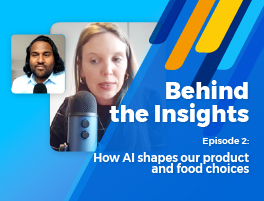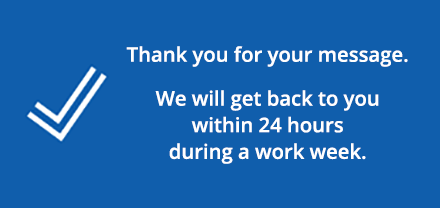Behind the Insights episode 3
Welcome to the jungle: The complex landscape of brands and consumer decisions
This is Behind the Insights, a vodcast series from MetrixLab. In this series, we talk to experts from all over the world to go beyond the data and see what’s really driving today’s hottest topics in insights.
In this episode, join MetrixLab Global Brand Consultant Hilary Gaines and Head of Effectiveness at adam&eveDDB Les Binet as they talk about how to succeed in building brands and winning customers.
Check it out and stay tuned for new episodes every month.
Or if you prefer, read the full transcript below.
Episode transcript:
Hilary: I’m Hilary Gaines. I’m one of MetrixLab’s global brand consultants and I’m the chief architect of our brand equity philosophy and brand tracking approach. I started in research some scary 30+ years ago, actually as a part time market research interviewer, and in those days it was telephone and pen and paper surveys. And for me what’s been so exciting is to see how market research has evolved and developed over the years, with huge leaps in technology and data science and advanced analytics. And over the last decade or so, those real advances that we’ve seen in neuroscience, cognitive and behavioral sciences have helped us to really understand the human brain better, how it works. And for us brand and communication researchers, it really advanced our appreciation of the myriad influences on consumer choice decisions.
Les: And I’m Les Binet, Head of Effectiveness at adam&eveDDB, which is a creative agency in London, part of the DDB network. And as head of effectiveness, my job is to measure the effectiveness of advertising and marketing, to understand what makes advertising and marketing effective, and to make it work better, to increase effectiveness. So I’m all about effectiveness, all about selling stuff, making stuff that works. And for the last 15 years or so, I’ve been working with the IPA, that’s the body that represents the advertising industry in London, doing some sort of general research into how advertising works with my colleague Peter Field. Together we’ve published several books on advertising effectiveness, including The Long and the Short of It, which looks at how advertising works over the short- and the long-term. And I think the reason that Hilary and I are talking together today is that a lot of the stuff that Peter and I have found in the data gels with the way that MetrixLab thinks about how marketing communications work and how to make them effective.
When it comes to brand growth, does penetration or loyalty matter more?
Hilary: So you know one of the key things of course is that the landscape of buyers today is so different to even a few years ago, and it’s ever-evolving. So when we talk about the importance of growing a brand through penetration, as you know that underpins our philosophy, it does make sense because in today’s world where there’s so much choice and brands are really much less if at all differentiated in some cases, loyalty doesn’t deliver the sales growth that it historically once did.
And so that new buying landscape has clearly posed challenges for brands to move away from often a very targeted marketing strategy – we’ve all seen brands with those target pen profiles, Lucy and Ben etc. – towards addressing a broad audience to drive brand penetration, getting more new buyers as a priority and thus sales and growth.
Les in your effectiveness work, do you find penetration is always the main driver of growth?
Les: Well, by and large, yes. So, it’s interesting you talked about how the buying landscape has changed so much, and you sort of like hinted at the idea that there was a kind of golden age of loyalty. And actually, I’d flip that on its head and say actually, it’s surprising how little has changed in that aspect of marketing. So, I mean, you know the original work on what drives buying behavior and what drives market share and brand growth was done by Andrew Ehrenberg. His first work was done in the late 1950s. And you know he found in the late 50s and through the 60s and the 70s and the 80s and right up until now, the same patterns again and again and again in market after market, category after category, brand after brand, the main driver of growth is penetration, with a little bit of extra help from loyalty. And that was true in 1959 and it’s still true now. Nothing has changed. There was no golden age of loyalty marketing. Loyalty rates haven’t declined, they just were never a main driver of growth. So Ehrenberg’s work shows that, Byron Sharp’s work and the work of Ehrenberg Bass Institute shows that, and Peter and I have found exactly the same patterns in the IPA data.
Hilary: That’s really interesting, and we’ve seen the same. You know, there’s ever-increasing consumer choice, multiple options, and you know really our loyalty isn’t guaranteed and so perhaps it’s more about redefining what loyalty means. Is it just about choosing my brand more often over others? You know buyers are polygamously loyal, aren’t they?
Les: Yeah promiscuously loyal, consumers don’t tend to be strongly loyal to brands, they’re weakly loyal to brands. They have brands they prefer, but they switch around between multiple brands. As I say, the main driver of growth is the size of the customer base, and the main driver of the size of the customer base is the rate at which you acquire customers. But loyalty and retention play a sort of supporting role. You need to put your main focus on growth through acquisition, but you also need a secondary focus on loyalty.
“Light buyers” are more important than you think
Hilary: But at the end of the day you know it’s the light buyers that really matter, isn’t it?
Les: Yes, yes.
Hilary: I think pretty much all brands have light or occasional buyers, users, consumers. But there’s so many of them that actually they significantly contribute to sales volume, that’s where the kind of head room for growth is.
Les: Yeah this is a thing that many people get wrong, isn’t it? They think that the most valuable customers are the frequent buyers, the heavy buyers, the ones who are loyal. But they’re the ones you’re going to get anyway. The ones you win or lose are the ones at the periphery. So, when a brand first launches yeah, the easy win, the low hanging fruit will be the people who buy the category a lot, the people who are heavy buyers of the category. But pretty soon you then need to migrate on to recruiting light buyers and non-buyers and the people on the periphery. That’s where the growth comes from.
And that’s the thing that marketers get completely wrong regularly.
The secret to targeting and segmentation
Hilary: So we need to reach all buyers, that’s vital. Especially those light-occasional. But is there a role for blending that with some clever targeting?
Les: You need to think about both targeting and reach. There’s a way in which you can do both targeting and reach at the same time, which is by segmenting the category by media usage, and then using that media segmentation to make sure you reach all the segments. So what marketers tend to think is that you should be segmenting the market in order to decide which segments you’re going to own. And that’s nearly always wrong. You segment the market in order to understand how you can reach all the segments. What do you need to do to get old people AND young people, rich people AND poor people, men AND women and so forth.
You may want to reach both youngsters and old farts like me, you know. And therefore you need a different mix of media to reach the two different groups. So you might want, you know, TV to reach older people and online video to reach younger people, or you might want you know, some different mix within that, you know.
Hilary: Yeah and this sophisticated kind of mass marketing, it doesn’t mean targeting everyone, it means – it doesn’t mean treating everyone the same, does it?
Les: Not necessarily. You might under certain circumstances want to go, ok right, we will talk to young people in a slightly different way from older people. You might want to do that, but there are dangers in that. Because brands are partly built as shared meanings, if you like. A shared set of associations and memory structures. Now, suppose for example you said we were going to target old people with TV and young people with online video. And to the old people we would appear to be a conservative, right-wing brand, and to young people we would be a progressive left-wing brand. What you end up with is two groups of people who have no shared understanding of what the brand means. And if they ever talk to one another, they will not have any kind of shared reference points for the brand.
I can’t say who this is, but a company was doing some sports-related marketing where they were targeting supporters of different football teams. And you know, like if you’re an Arsenal fan, you’d see great things about, you know, we’re associated with Arsenal. And if you were a Chelsea fan it would, you know, they’d appear to be associated with Chelsea. But when they measured the effectiveness of this approach to doing things they found it was ineffective. Because it’s basically being duplicitous and trying to be all things to all people.
The keys to unlocking consumer decisions
Les: It’s about inserting your brand into people’s heads so that whenever your brand is relevant, whenever your brand could solve a problem, meet a need, whenever your brand is relevant, your brand comes quickly and easily to mind, and ideally, you know, before anyone else’s does. If someone thinks fast food, they think McDonald’s. If they think burgers, they think McDonald’s. But you also want to make sure that they remember McDonald’s if it’s breakfast, or a coffee, or a snack in the middle of the afternoon, or a place to sit down when you’re in the middle of, you know, a shopping trip, or a treat for the kids, or, you know, a late night snack, and so on.
Hilary: Mental availability is key, absolutely, but actually, so is emotional resonance, so is physical availability. And in some categories like for the travel industry, you know, that ease of booking your holiday online is actually pretty critical and it’s the biggest contributor to equity in that category.
Les: If I was running a business, the first thing I’d think about is physical availability. You’ve got to make sure that people can get your product easily and quickly and with, you know, minimal hassle. But the thing is of course that physical availability is one of those things that you can max out quite quickly, you know. Once you get to the point where, you know, you’re in all the bricks and mortar shops and you know, you are, um… You were going to disagree with me, aren’t you?
Hilary: Yes slightly! Because it actually isn’t just about that physical distribution. Yes that’s important. But it’s about the ease of the transaction, the effort, the consumer effort.
Les: You’re right.
Hilary: We’ll talk more about this, but you know, in a CPG situation it’s even, you know, stand out on shelf.
Les: Yes, yeah. And you know, like even if you’re buying online, you know, there’s things like, you know, am I going to get it today, tomorrow, next week, whatever you know, so yeah.
Hilary: And if we think about that ever-evolving landscape of choice for buyers, in terms of mental availability we also must recognize that consumers don’t just have one consideration set. We’ve got many situational or context-specific evoke sets. So different choices, you know, they may depend on mood, on occasion, needs, and that’s really where mental availability comes in.
Les: And I think again, going back to targeting, we tend to sort of spend too much time trying to target particular sort of pen portrait shoppers, and not enough targeting particular kind of mindsets and situations and decision states. So, you know, me and a 19-year-old are probably quite similar in a sense when we’re choosing a coffee or something like that. But you know, the differences between me and a 19-year-old are not so important. It’s understanding the state of mind of somebody who wants a coffee, somebody who wants breakfast, and so forth.
At the end of the day, we’re all just human
Hilary: And I think, as we said at the outset, today’s marketers are really dealing with a very complex ecosystem of brand influences. So the human psychology maybe hasn’t change, but that complexity of the ecosystem has. And I think, you know, the advances in data science have helped us to make huge in-roads into making sense of all of the complexities of these influences on today’s very busy consumers.
Les: Yeah and I think you’ve got a very good framework for thinking about these issues. As you say, you need to tailor the precise balance of the metrics for different brands in different categories and also at different stages of their development. But the fundamentals I think are pretty much the same as they ever were, for most brands in most categories. And interestingly, like Peter and I recently we’ve been doing work on B2B, which you’d think would be so different from B2C. And yet, when we start to look at the data, you know what, the coefficients of the models and things are not statistically different between B2B and B2C.
Hilary: At the end of the day they’re still humans, whether they’re working in B2B or B2C.
Les: Business people are human beings just as ordinary people are, and we all have the same underlying biology and psychology. So it’s human nature that is at the root of marketing, and that doesn’t change.
Hilary: So thanks Les, so much, it’s been an absolute delight talking to you today.
Les: Thank you! It’s been a real pleasure.
Hilary: Thank you.
Les: Bye.
Hilary: Bye!








